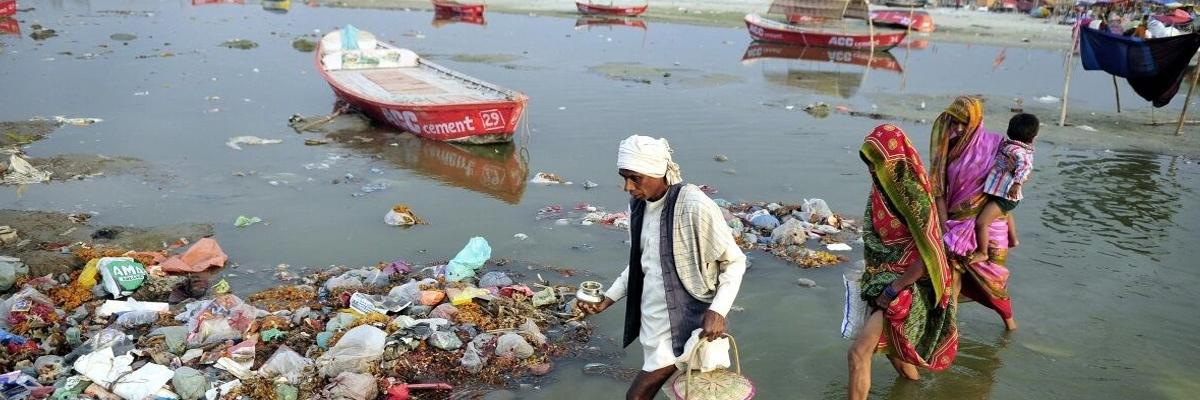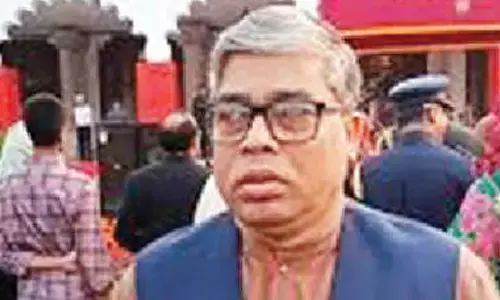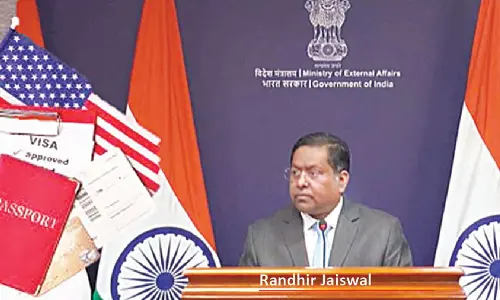Ganga clean-up plan is fundamentally flawed: International expert

A globallyrespected water expert has questioned Prime Minister Narendar Modis pet project to clean up the river Ganga, saying it is fundamentally flawed because it is rooted in the past and doesnt take into account the future He also said his offer of help in 2014 had been summarily ignored and that it was not possible to clean up the Ganga by 2020, contrary to repeated claims by the governme
Patna: A globally-respected water expert has questioned Prime Minister Narendar Modi's pet project to clean up the river Ganga, saying it is fundamentally flawed because it is rooted in the past and doesn't take into account the future. He also said his offer of help in 2014 had been summarily ignored and that it was not possible to clean up the Ganga by 2020, contrary to repeated claims by the government.
"The entire Ganga pollution control plan is fundamentally flawed. If by a miracle the current plan could be implemented, it will still not be effective even over the medium term, let alone the long term, because it is mostly past-oriented and doesn't take into account future conditions," Asit K. Biswas, Distinguished Visiting Professor at the Lee Kuan Yew School for Public Policy in Singapore," told IANS in a telephonic interview.
"By 2050, India will have 1.76 billion people and much larger industrial activities, none of which are seriously considered (factored in) in the current plan. Consequently, with a 95 per cent probability, I can safely predict that by 2030, the Ganga as a river will be more polluted than it is now, even after expenditure of over $41 billion up to 2020," he said.
Biswas, who is of Indian origin, said that if the present plan continues, he sees only more and more problems with the Ganga's clean-up in the coming years. "It is time to bring the best and independent water experts, both from India and rest of the world, to see objectively what can be done to clean the Ganga over the next two to three decades. When Uma Bharti became the Union Minister in charge of the Ganga clean-up drive (in 2014), I offered to meet her and advise her, at no cost, on what needs to be done over a realistic 20-30 year period.
"The letter was hand-delivered to her office by the CEO of a Fortune 100 company whom I advise. However, she did not even bother to acknowledge it," Biswas, co-founder of the Third World Centre for Water Management in Mexico, said. Biswas, who has authored and edited over 80 books, mainly on water resources and management, said it is unfortunate that in India there is just talk of "mother" Ganga and worshipping it without bothering to keep it clean.
"Political rhetoric will never clean up the Ganga. It needs a new and good plan and then determined execution of that plan. Sadly, a good and implementable plan still does not exist; nor is there any plan to develop one.
"It is theoretically impossible to clean up the entire Ganga by 2020. Indian politicians have not even defined what they mean by Ganga clean-up. Normally, this means cleaning the entire river.
The best that can be done perhaps is to clean up a small stretch of river if action is carefully planned and executed. There are no signs that this is likely to happen on a long-term basis, even for a limited stretch of Ganga, by 2020," said Biswas, who is occupied round the year in his advisory role to 19 governments, including China, and to three CEOs of Fortune 100 companies.
Biswas said it is a fact that the Ganga is one of the world's most polluted rivers. At present, some 50 cities along Ganga discharge six billion litres of untreated sewage into the river. This is the largest source of pollution. Furthermore, untreated industrial wastewater, containing many known but mostly unknown hazardous chemicals and heavy metals, some of them carcinogenic, further compound the problem.
Add to this is the agricultural run-off containing pesticides and fertilisers, as well as disposal of human and animal corpses. No serious long-term monitoring of water quality and sediments has ever been done. Thus, the river now carries a deadly cocktail of known and unknown pollutants.
This has made ritual dips in the holy river increasingly dangerous for human health over time. Last month G.D. Agrawal, a former professor at IIT-Kanpur, died after a 111-day fast to focus attention on cleaning up the Ganga. Sadly, his death has not made any perceptible difference to the acceleration of the clean-up efforts. Now, Sant Gopaldas is fasting unto death to stop mining activities along the river. Unfortunately, all this doesn't have much impact on devising clean-up efforts which will work.
Biswas pointed that some $14 billion has been spent thus far to construct sewage treatment plants and another $27 billion has been allocated till 2019. The overwhelming majority of these plants, which have been operational for more than three years, are either not functioning properly or at a low efficiency, various stakeholders say.
Even worse, construction of sewer lines to bring sewage to the treatment plants are all running well behind schedule. Thus, numerous plants do not get enough sewage to treat. There is not a single vocational school in India which can properly train people to operate these plants. In addition, corruption in construction of the sewage treatment plants means they do not function properly. Also, there is extensive corruption in all the state pollution control boards, the stakeholders say, adding there are no visible attempts to rectify the situation.
"Existing barrages and dams now divert at least 60 per cent of the natural flow of the Ganga and its tributaries. In addition, 6.5-7 million tubewells in the Ganga basin are steadily withdrawing groundwater. This means the Ganga's flow is progressively declining. Less flow with increasing discharge of wastewater means the water quality will decline even further," Biswas said.
According to Biswas, the Kathmandu-based ICIMOD's climate change models clearly indicate that the Himalayan glaciers are melting and most will be gone by 2050. This means the Ganga is now getting more water from these glacial-melts than ever before in history. Thus, both the flow and quality of water is likely to worsen by 2050, when most of the glaciers will be gone. "No one is even thinking of this possibility. These events will aggravate the situation even further," Biswas lamented.
- Imran Khan



















